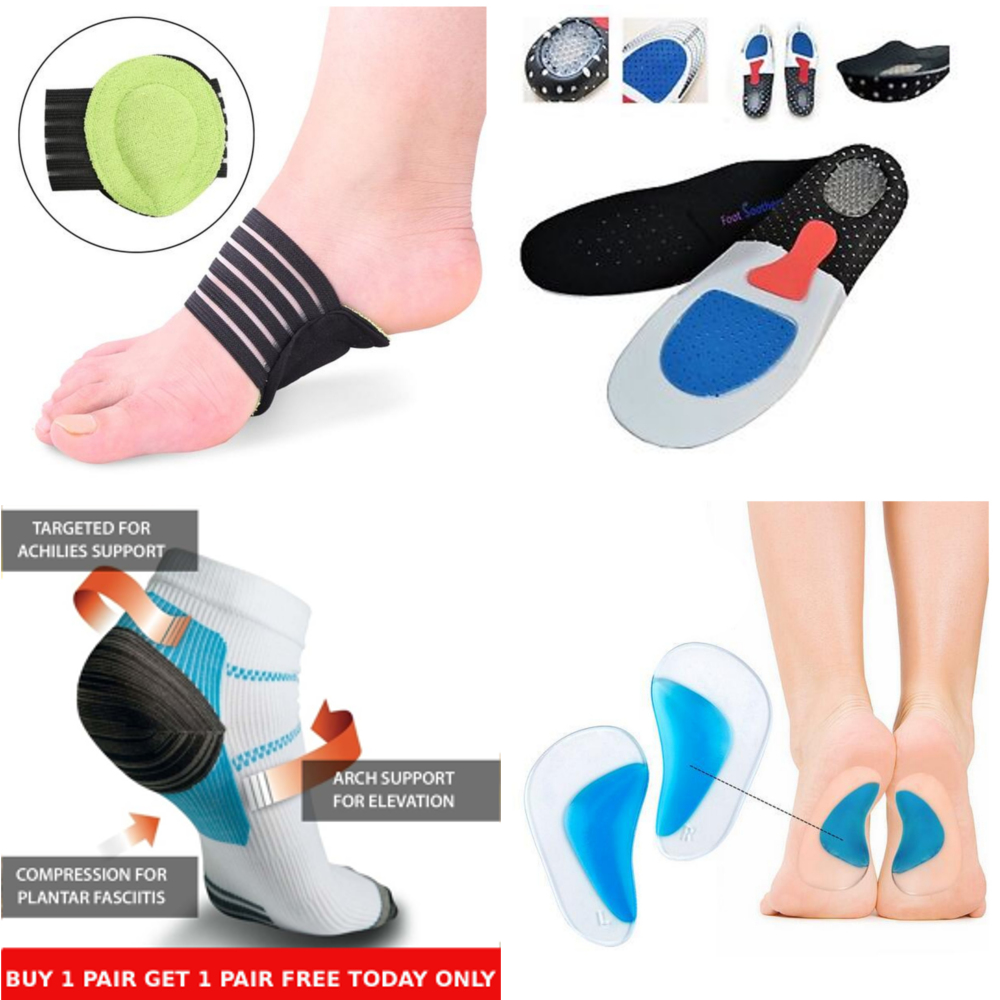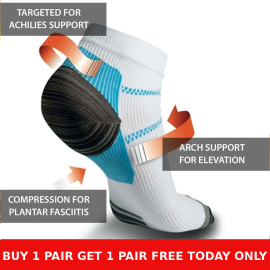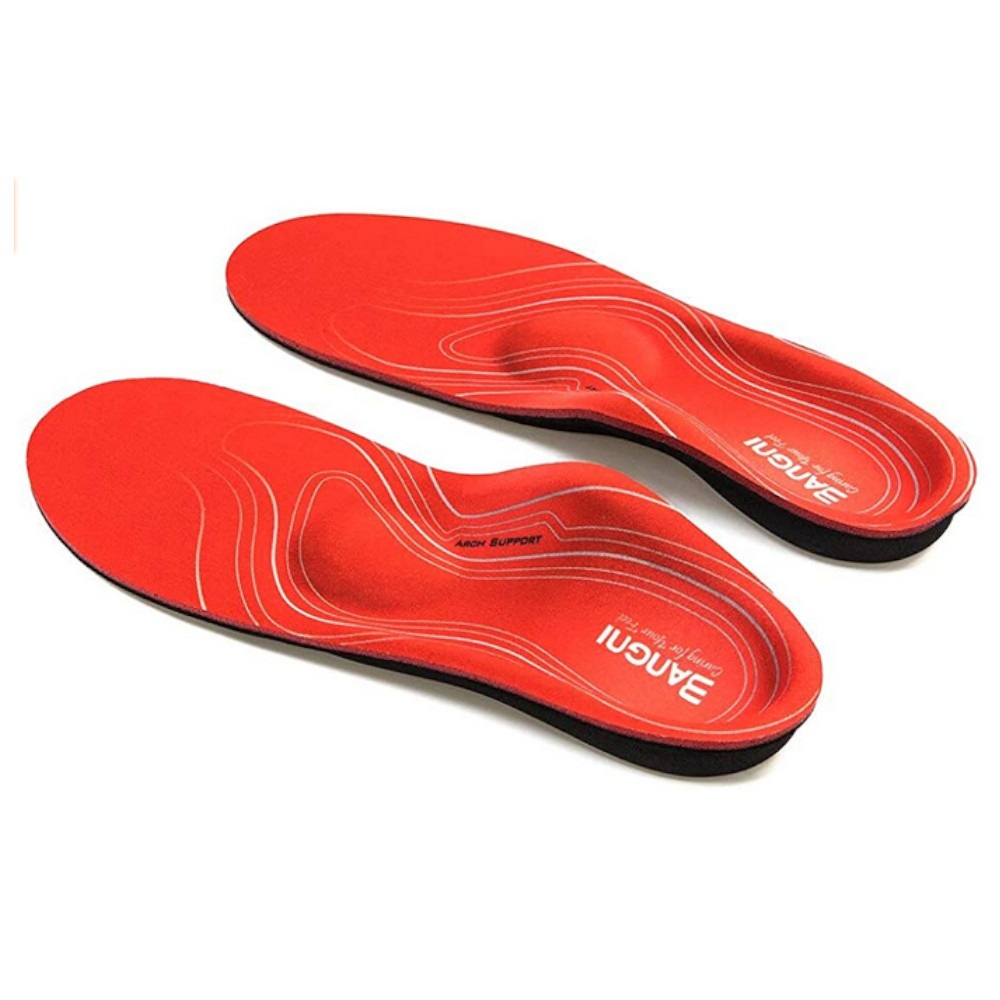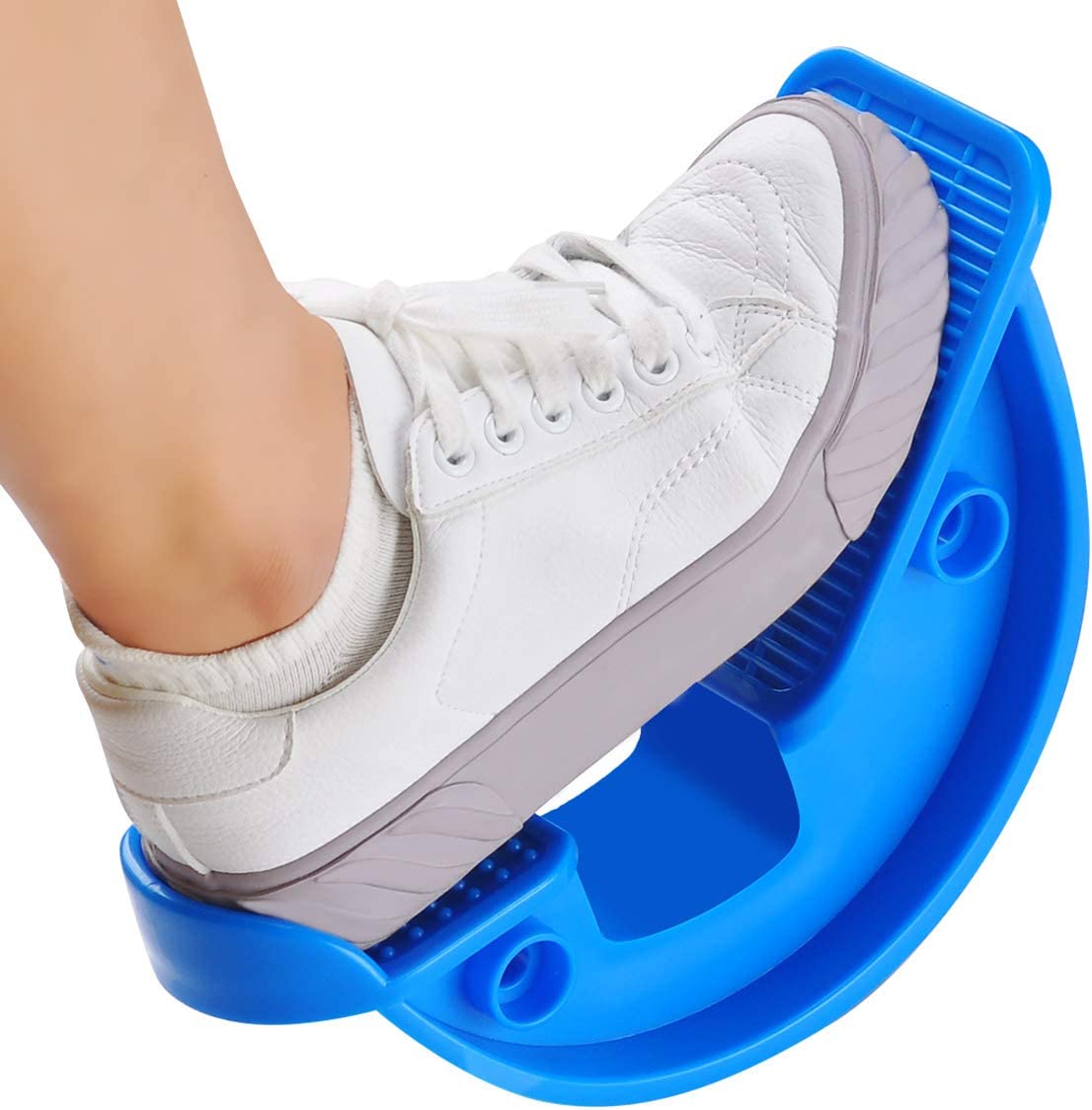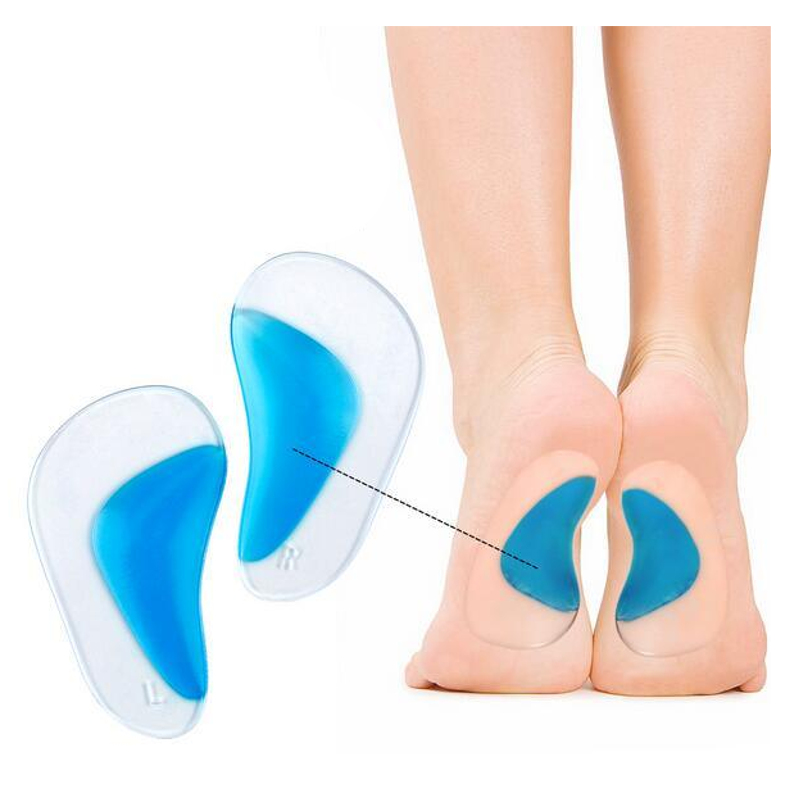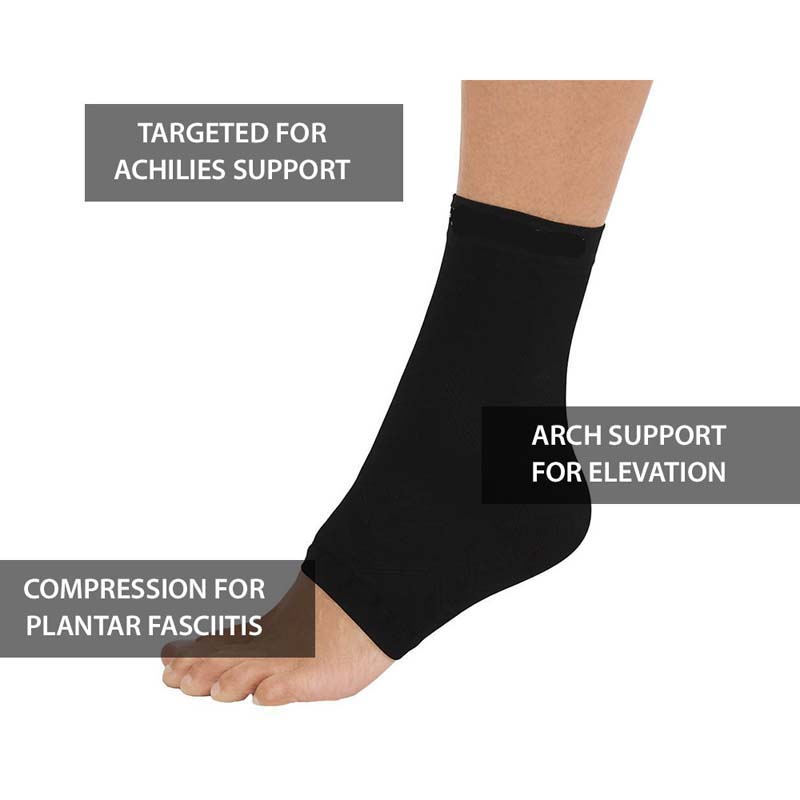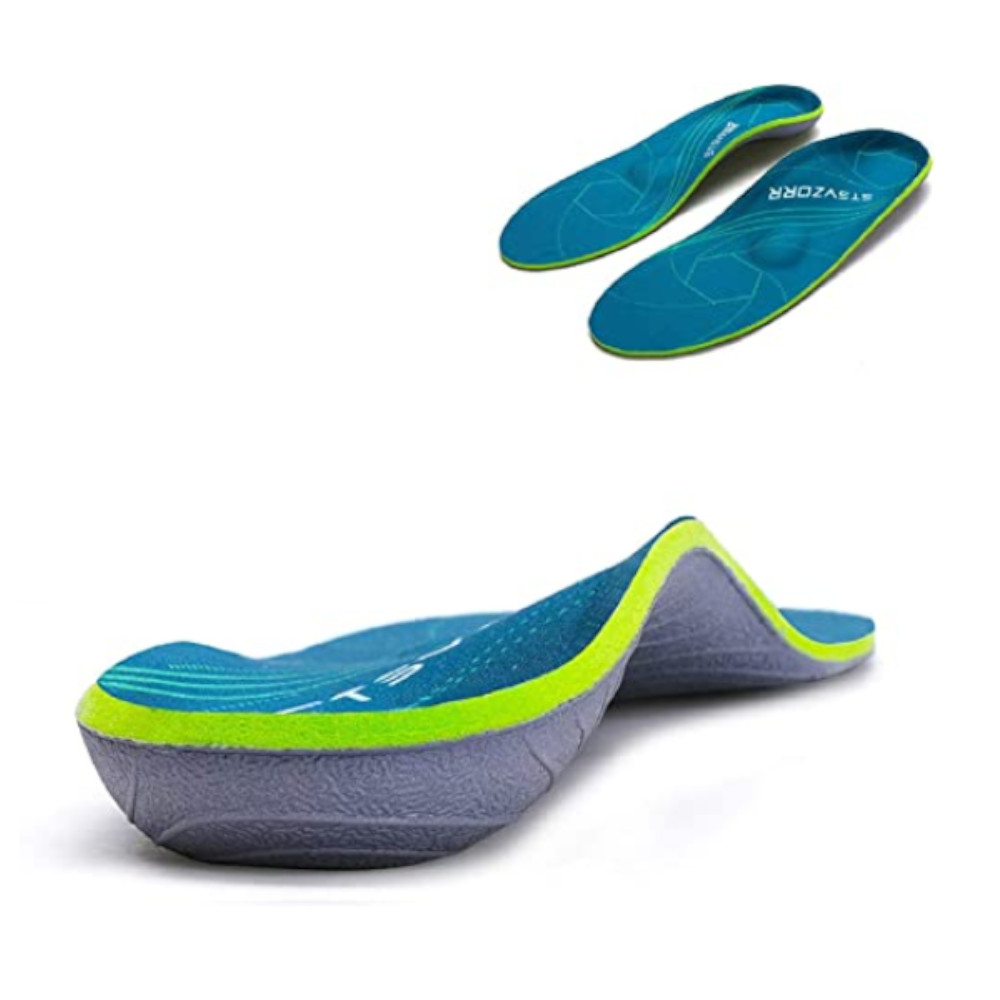Ergonomics and Plantar Fasciitis: A Comprehensive Guide

Featured Products for Plantar Fasciitis Foot Pain Relief
Plantar fasciitis, a condition characterized by inflammation of the plantar fascia, can be aggravated by various factors, including poor ergonomics. The way we move, stand, and sit can impact the health of our feet. In this comprehensive guide, well explore the connection between ergonomics and plantar fasciitis, offering insights and practical tips to create a more foot-friendly environment in both work and daily life.
Understanding Ergonomics:
-
Definition:
- Ergonomics involves designing and arranging environments to optimize human well-being and overall performance. In the context of plantar fasciitis, focusing on ergonomic principles helps reduce strain on the feet, promoting comfort and minimizing the risk of exacerbating symptoms.
-
Workplace Ergonomics:
- Workplace ergonomics considers the design of workstations, tools, and tasks to enhance efficiency while prioritizing the health and safety of employees. Proper workplace ergonomics can significantly contribute to the prevention and management of plantar fasciitis.
Ergonomics and Plantar Fasciitis:
-
Foot-Friendly Workspace:
- Design your workspace with your feet in mind. Ensure that your chair, desk, and computer are arranged to support good posture and reduce strain on the feet. Keep frequently used items within easy reach to minimize unnecessary stretching or bending.
-
Correct Seating Position:
- Maintain a correct seating position by adjusting your chair height and ensuring your feet are flat on the floor. Use a footrest if necessary to support proper alignment and reduce pressure on the plantar fascia.
-
Comfortable Footwear:
- Choose comfortable and supportive footwear, especially if you spend long hours standing or walking at work. Consider shoes with good arch support and cushioning to reduce strain on the plantar fascia.
-
Anti-Fatigue Mats:
- If you have a standing desk or work in an environment that requires prolonged standing, use anti-fatigue mats. These mats provide cushioning and support, reducing the impact on your feet and promoting better ergonomics.
-
Regular Breaks and Stretching:
- Incorporate regular breaks into your work routine to stretch and move your feet. Simple calf stretches, toe stretches, and ankle circles can help maintain flexibility and prevent stiffness in the plantar fascia.
Foot-Friendly Practices in Daily Life:
-
Proper Lifting Techniques:
- When lifting objects, use proper techniques to avoid putting excessive strain on your feet. Bend at the knees, keep the object close to your body, and avoid twisting motions, which can contribute to plantar fasciitis discomfort.
-
Comfortable Footwear at Home:
- Extend the practice of wearing supportive footwear to your home environment. Avoid walking barefoot on hard surfaces, and consider using supportive slippers or shoes indoors to provide ongoing comfort and support.
-
Elevate Your Feet:
- Take breaks to elevate your feet when possible, especially after prolonged periods of standing or walking. This can help reduce swelling and alleviate pressure on the plantar fascia.
Foot-Friendly Travel:
-
Supportive Travel Shoes:
- Choose supportive shoes for travel, whether youre walking through airports, exploring new destinations, or sitting for extended periods. Supportive footwear contributes to better ergonomics during travel.
-
Footrests and Cushions:
- Use footrests and cushions during long flights or car rides to support proper leg and foot alignment. This helps prevent stiffness and discomfort in the plantar fascia.
Professional Guidance:
-
Consult with Healthcare Professionals:
- If you have plantar fasciitis or are at risk of developing it, consult with healthcare professionals, including podiatrists or physical therapists. They can provide personalized advice on ergonomics tailored to your specific needs and recommend exercises to enhance foot health.
-
Orthotic Inserts:
- Consider using orthotic inserts or custom-made orthotics in your shoes. These devices can provide additional support and help align the foot properly, contributing to improved ergonomics and reduced strain on the plantar fascia.
Conclusion:
Prioritizing ergonomics in your daily life and workspace is essential for preventing and managing plantar fasciitis. By making thoughtful adjustments to your environment, incorporating supportive practices, and seeking professional guidance, you can create a foot-friendly lifestyle that contributes to overall well-being. Remember that small changes can make a significant impact, enhancing comfort and reducing the risk of plantar fasciitis-related discomfort.
Featured Products for Plantar Fasciitis Foot Pain Relief
Latest Blogs
- Taking a Stand Against Heel Pain: Practical Solutions
- Happy Heels, Happy Life: Banishing Foot Pain for Good
- The Road to Relief: Strategies for Combating Heel Pain
- Heel to Toe Wellness: Tackling Foot Pain Head-On
- Foot Pain Decoded: Understanding the Signals Your Feet Send
- Soothing Steps: Natural Remedies for Heel and Foot Pain
- Putting Your Best Foot Forward: Managing Heel Discomfort
- The ABCs of Happy Feet: Beating Heel and Foot Pain
- From Heel to Toe: Navigating Common Foot Pain Issues
- Taking a Step Back: Causes and Remedies for Heel Pain
- Footloose and Pain-Free: Tips for Happy Heels and Feet
- Soleful Solutions: A Guide to Alleviating Heel and Foot Discomfort
- Stepping Into Comfort: Understanding Heel and Foot Pain
- From Pain to Progress: Inspiring Plantar Fasciitis Journeys
- Living a Full Life with Plantar Fasciitis: Success Stories
- Plantar Fasciitis and Exercise: Finding the Right Balance
- The Impact of Stress on Plantar Fasciitis Symptoms
- Plantar Fasciitis: When to Seek Professional Help
- Inflammatory Foods and Plantar Fasciitis: What to Avoid
- Ergonomics and Plantar Fasciitis: A Comprehensive Guide
- The Importance of Rest in Plantar Fasciitis Recovery
- Traveling with Plantar Fasciitis: Tips for Happy Feet
- Plantar Fasciitis and Your Sleep: Improving Rest Quality
- The Psychological Aspect of Living with Plantar Fasciitis
- Plantar Fasciitis and High-Impact Activities: Navigating Risks
- How to Stay Active with Plantar Fasciitis: Practical Tips
- Plantar Fasciitis and Aging: Strategies for Seniors
- Cryotherapy for Plantar Fasciitis: Icy Relief for Your Feet
- Aquatic Exercise for Plantar Fasciitis: Dive into Healing
- Mindfulness and Meditation for Plantar Fasciitis Relief
- Heel Pain 101: A Guide to Plantar Fasciitis
- Finding Relief - Plantar Fasciitis Home Remedies
- The Emotional Toll of Chronic Plantar Fasciitis
- Post-Workout Foot Care for Plantar Fasciitis Sufferers
- DIY Foot Massage Techniques for Plantar Fasciitis
- From Diagnosis to Recoveryc- Navigating Plantar Fasciitis
- Plantar Fasciitis in Children Signs and Solutions
- Plantar Fasciitis and Weight: Impact on Foot Health
- How Nutrition Affects Plantar Fasciitis Recovery
- Yoga for Plantar Fasciitis: Poses for Pain Relief
- Breaking Down Plantar Fasciitis Myths and Misconceptions
- Plantar Fasciitis Stretches - Daily Routine for Relief
- The Link Between Plantar Fasciitis and Flat Feet
- Plantar Fasciitis in Pregnancy - What to Expect
- Desk Job Dilemma - Coping with Plantar Fasciitis at Work
- Plantar Fasciitis in Athletes Strategies for Recovery
- Massage and Plantar Fasciitis A Soothing Combination
- Plantar Fasciitis at Night: Tips for Better Sleep
- Plantar Fasciitis vs Heel Spurs - Understanding the Difference
- The Role of Stretching in Plantar Fasciitis Recovery
- Running with Plantar Fasciitis: Dos and Donts
- Preventing Plantar Fasciitis: Tips for Foot Health
- Natural Remedies for Plantar Fasciitis You Havent Tried
- Heel Pain Demystified: Plantar Fasciitis Explained
- Best Shoes for Plantar Fasciitis: A Comprehensive Guide
- Managing Plantar Fasciitis Pain: Tips and Tricks
- The Complete Guide to Plantar Fasciitis Treatment Options
- 10 Effective Exercises for Plantar Fasciitis Relief at Home
- Understanding Plantar Fasciitis: Causes and Symptoms
- Why do I get Pain in My Feet at Night
- Is pain in your feet a sign of diabetes
- What causes pain in my feet
- Plantar Fasciitis - Why so Painful
- What is that pain in my heel
- Should I Walk with Foot Pain
- How to Treat Ankle Pain
- 10 Best Exercises of Plantar Fasciitis
- Do Compression Socks Help Foot Pain
- Do Insoles Work for Foot Pain
- Best Stretches for Plantar Fasciitis
- 5 Causes of Plantar Fasciitis
- Do Back Posture Braces Actually Work
- Foot pain from walking
- Best Insoles for Plantar Fasciitis
- Pain in heel of foot after Running
- Treatment for Pain in arch of foot
- Pain on top of foot
- Mortons neuroma treatment
- How to remove an Ingrown Toenail
- Foot Heel Spur Pain
- Sore Foot in the Morning
- Suffer Heel Pain in the Morning ?
- Start a running routine
- Running through Fatigue
- Best Achilles Tendonitis and Ankle Excercises
- Causes of Achilles Tendonitis and Ankle Pain
- Plantar Fasciitis Cure and Treatment
- Best Plantar Fasciitis Products
- Causes of Plantar Fasciitis and Heel Spur Pain
- Best Plantar Fasciitis Excercises

